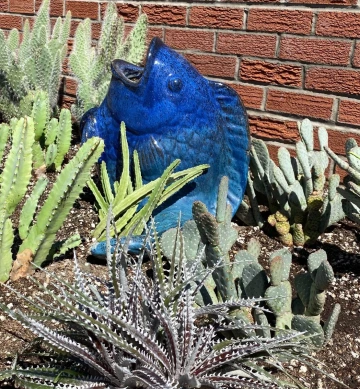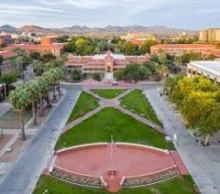
An aerial view of the coral reef garden location surrounding the USS Arizona Memorial centerpiece.
As a campus, we aim to use the landscape to preserve and promote respect for heritage and also to inspire and educate. We believe that as a land-grant institution, it is our duty to convey science-based practices and that we can do this through innovative approaches applied in planning, designing, constructing and maintaining the campus grounds. Ultimately, we aim to transform and improve the landscape to better support the UA Mission to “discover, educate, serve and inspire”.
Toward this goal of enhancing the value of the campus grounds, members of the Campus Arboretum Advisory Board have worked with those in Grounds Services, Planning Design and Construction, undergraduate and graduate students in plant sciences and landscape architecture, nurseries and regional plant experts to design a garden using climate appropriate cacti and succulent plants that resemble a living coral reef which will adorn the planters surrounding the USS Arizona Memorial on the UA Mall.
BEFORE THE CORAL REEF INSTALLATION:
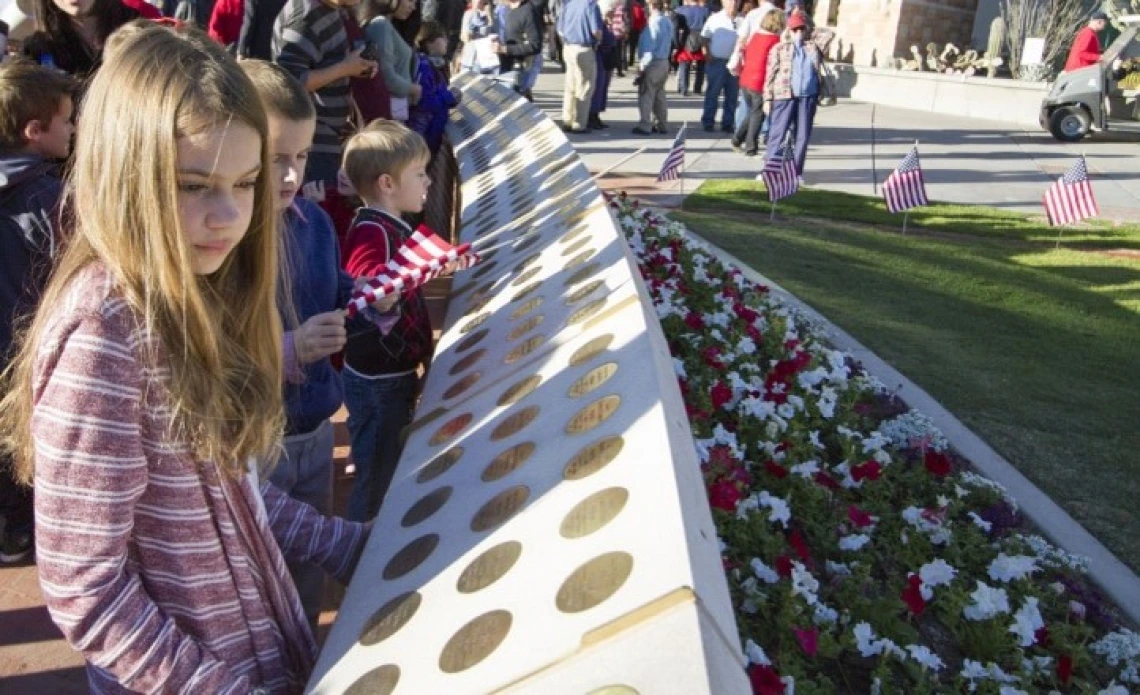
The USS Arizona Memorial at the time of its Opening Event showing flowering annuals in the perimeter planting beds.
AFTER THE CORAL REEF GARDEN INSTALLATION:
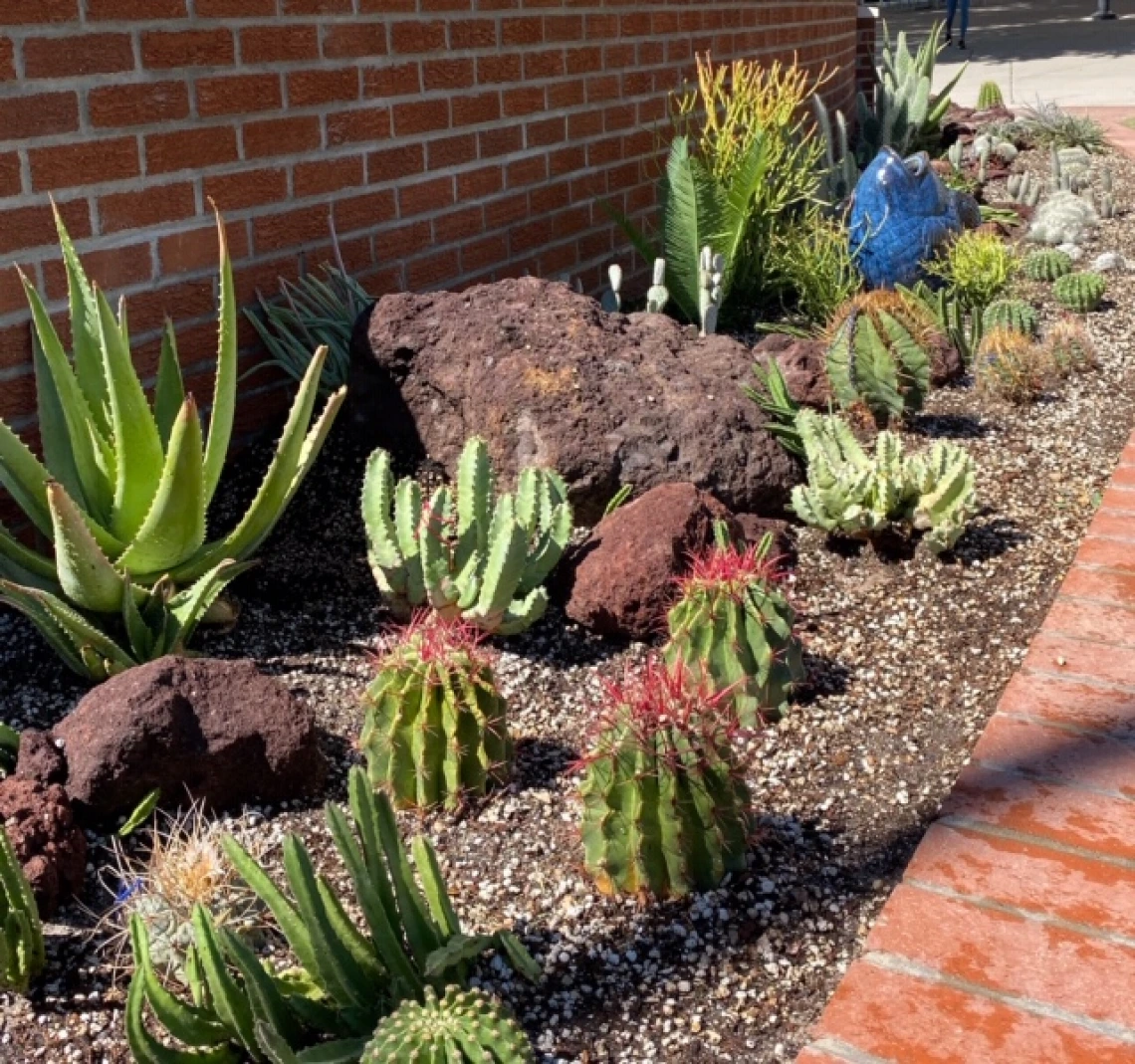
The Coral Reef Garden after its installation in 2019.
INSPIRATION FOR THE GARDEN:
The design acknowledges the conscious choice to leave the USS Arizona undisturbed, below water in Pearl Harbor, as a gesture of respect for those who lost their lives there. Through this innovative garden project, we aim to attract attention to the USS Arizona Memorial and increase recognition of those honored there. While so doing, we also provide color, texture, striking beauty and an inspiring example of creativity that will benefit the campus and community as we also model sustainable, low-input landscape practices. The nature of these environmentally adapted plants allows us to use less less water, input less for maintenance and replacement, thus, conserving resources and providing a more permanent, sustainable installation that will grow larger and more impressive with time.
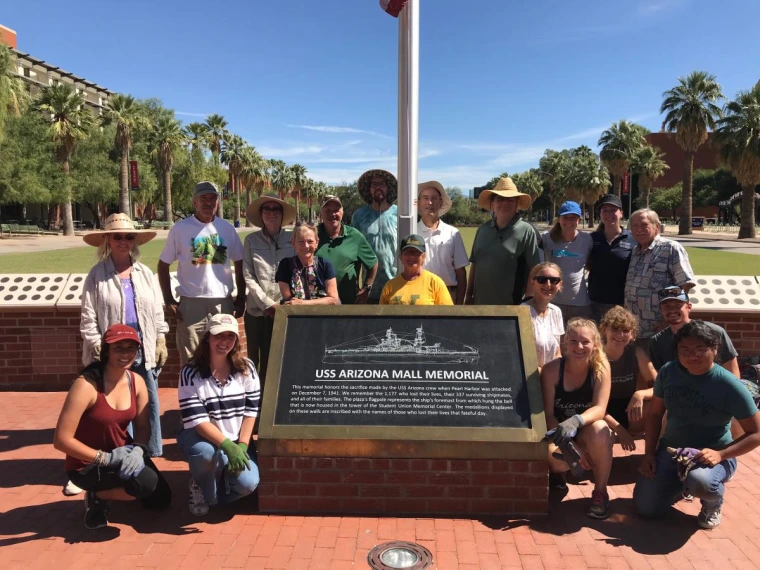
TEAM WORK MADE THE DREAM WORK:
University of Arizona Grounds Services removed the substrate in the planter beds and replaced it with a special blend of soilless mix suited to the drainage needs of cacti and succulent. Acme Gravel provided lava rock boulders that were placed in the beds by Grounds Services and Campus Arboretum volunteers. The soil was contoured as the boulders were added to begin to form the 3D structure typical of a coral reef.
Thanks to the generosity of a Campus Arboretum donor as a tribute to Kevin Barber, cacti and succulent plants were purchased from local nurseries. This gift recognizes Kevin's passion for cacti and succulents as well as his military service. Nurseries including Green Things and B&B Cactus Nurseries offered plants at considerable discount, and Dan Bach's Cactus Nursery donated any additional plants we needed. Plants for the Southwest and Mesquite Valley Growers provided magnificent large, and rare specimen plants that provided immediate effect in the garden. Many thanks to these wonderful local connections for their enthusiasm and support!
To further engage the community, volunteers including undergraduate and graduate students, Campus Arboretum Board members, UA administrators (past and present), and alumni met on Sunday Oct. 6, 2019 to layout a design with the skilled guidance of the UA Planning, Design and Construction's Landscape Architect Mark Novak. The group then spent the better part of the day of a perfect fall day installing the plants.
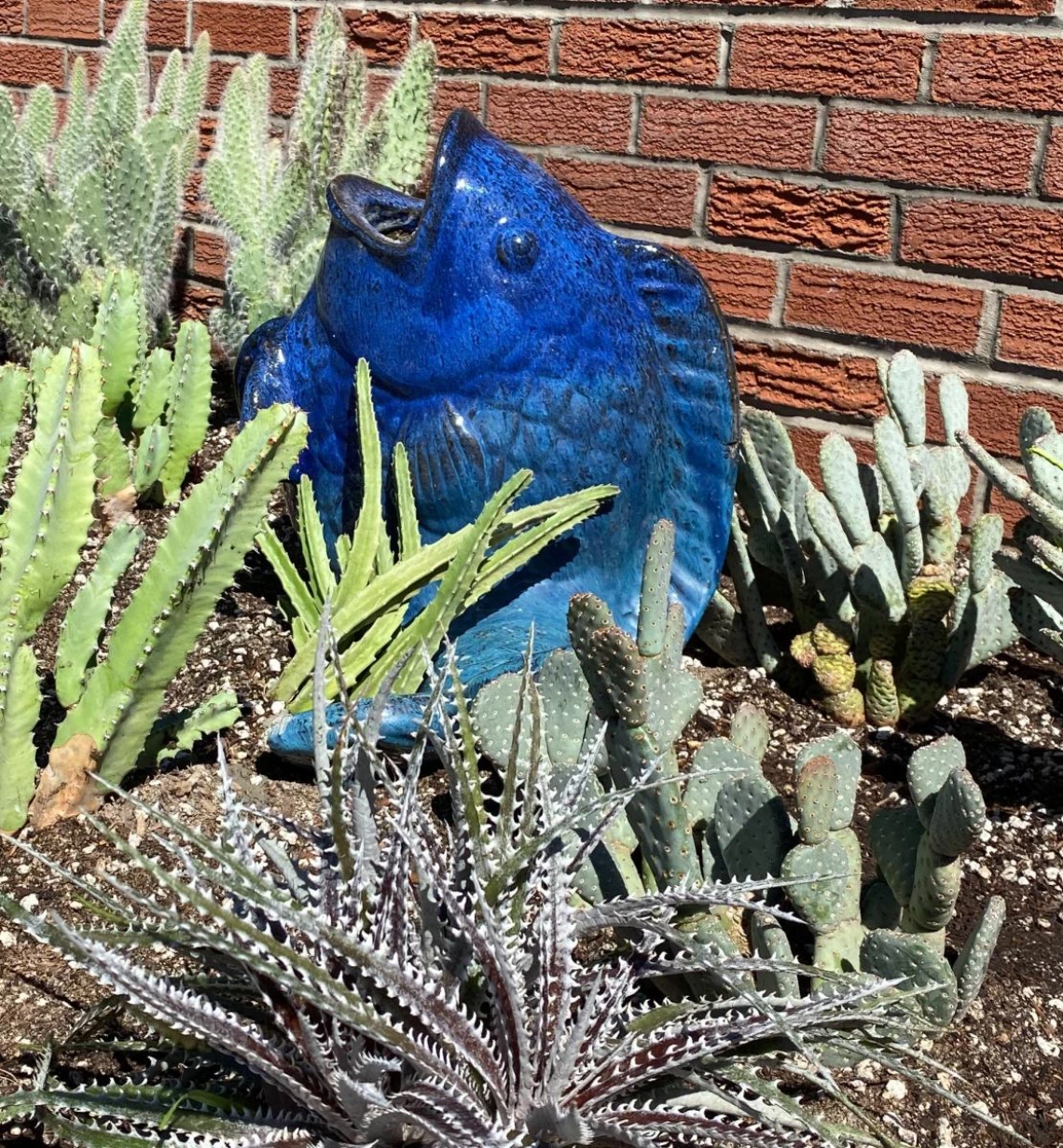
Glazed ceramic fish were placed throughout the garden to enhance the feeling of an aquatic environment.
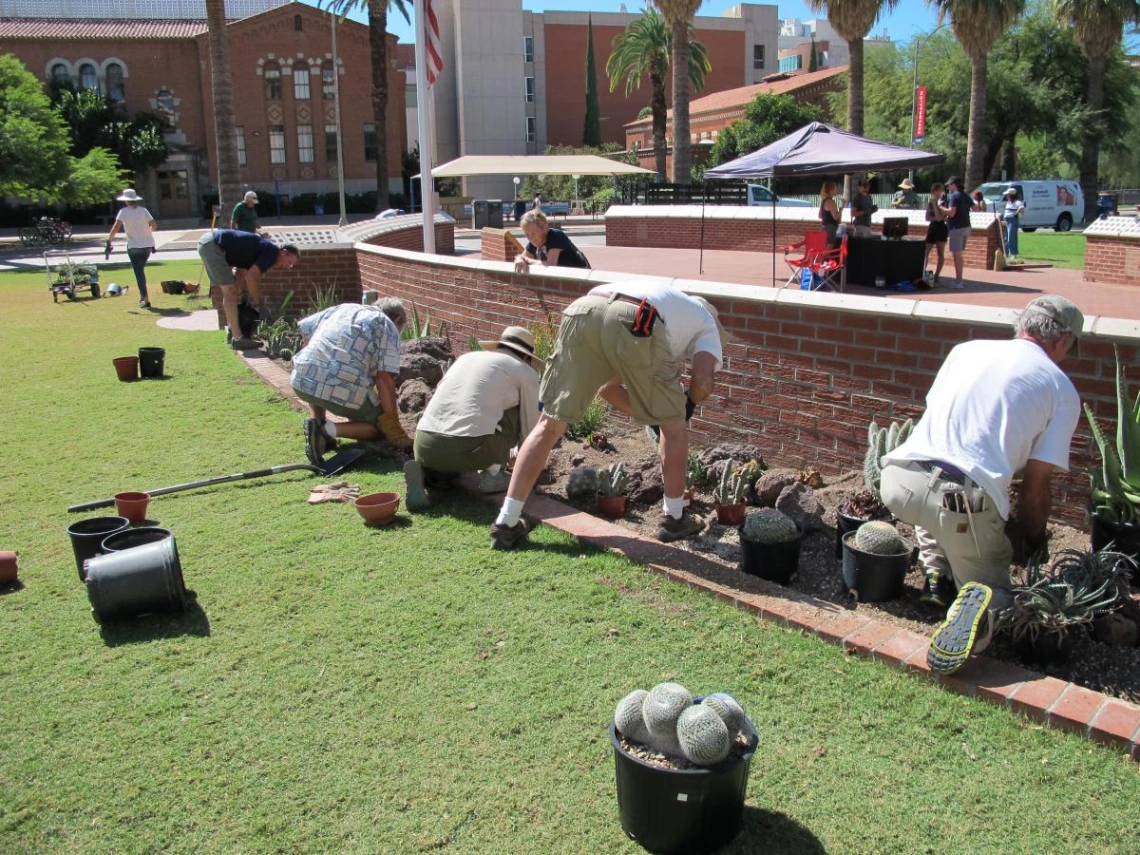
Many hands make light work!
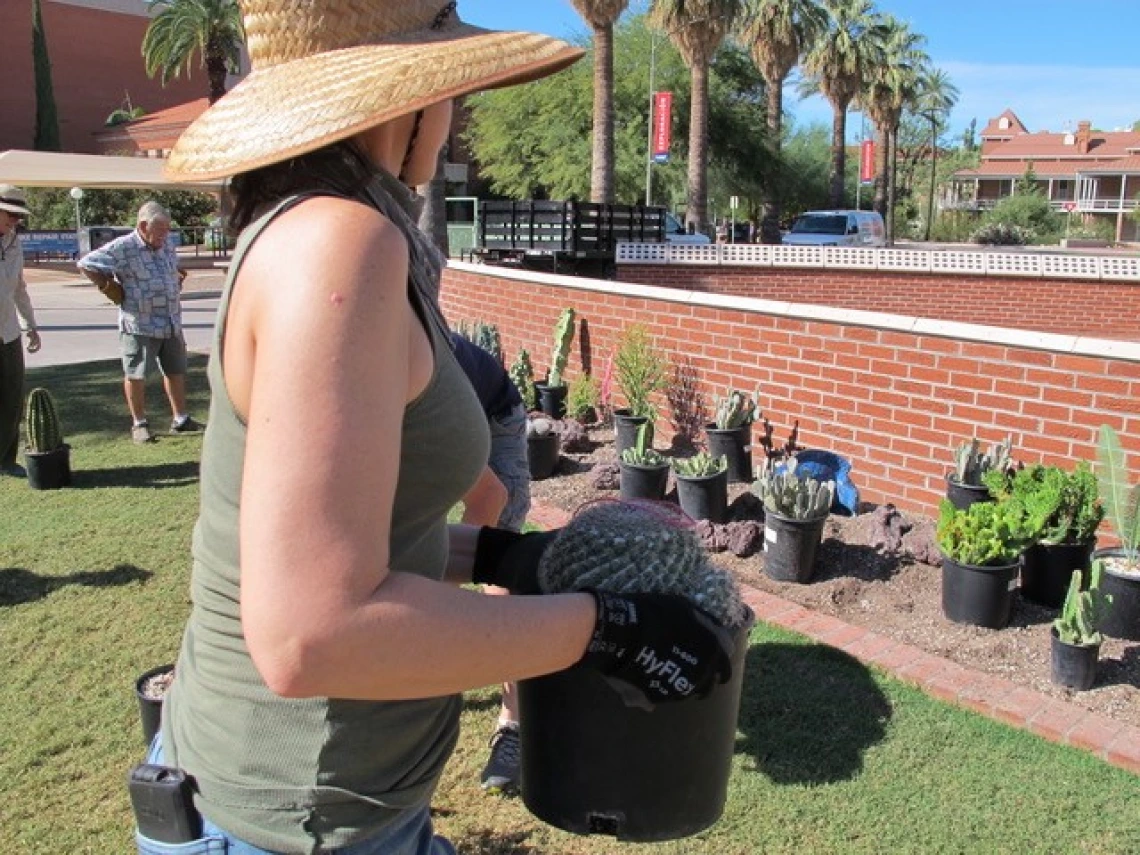
Volunteers worked through the heat to complete the project in one day!

Volunteers completed the installation of hundreds of plant specimens.
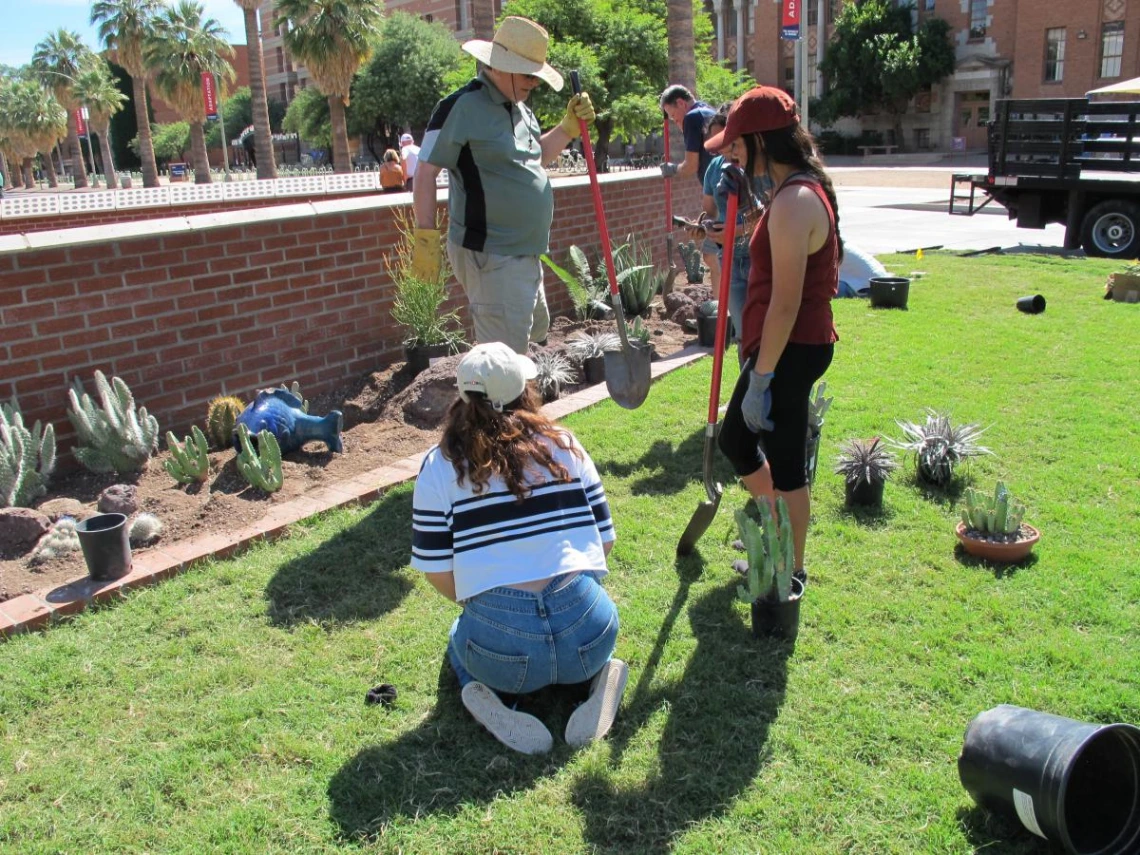
Mark Novak, University Landscape Architect helps students lay out the plants.
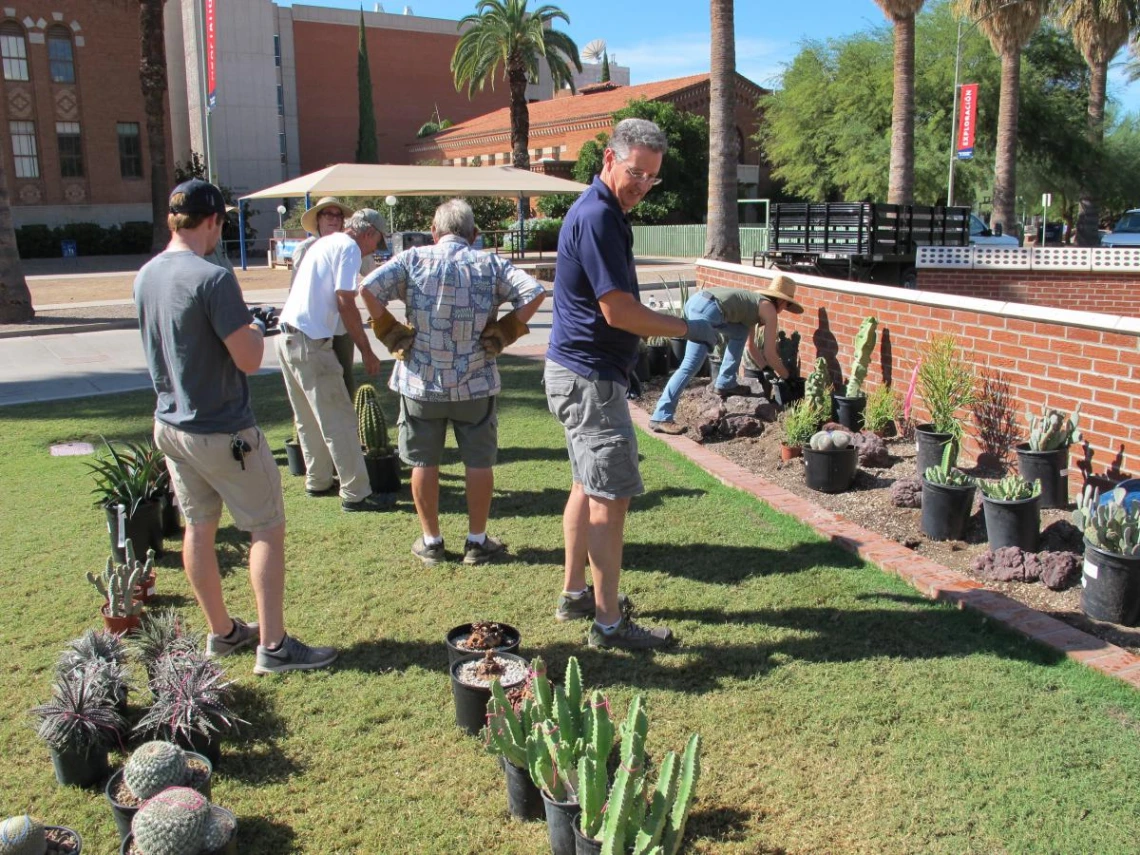
Students and volunteers help lay out the garden.
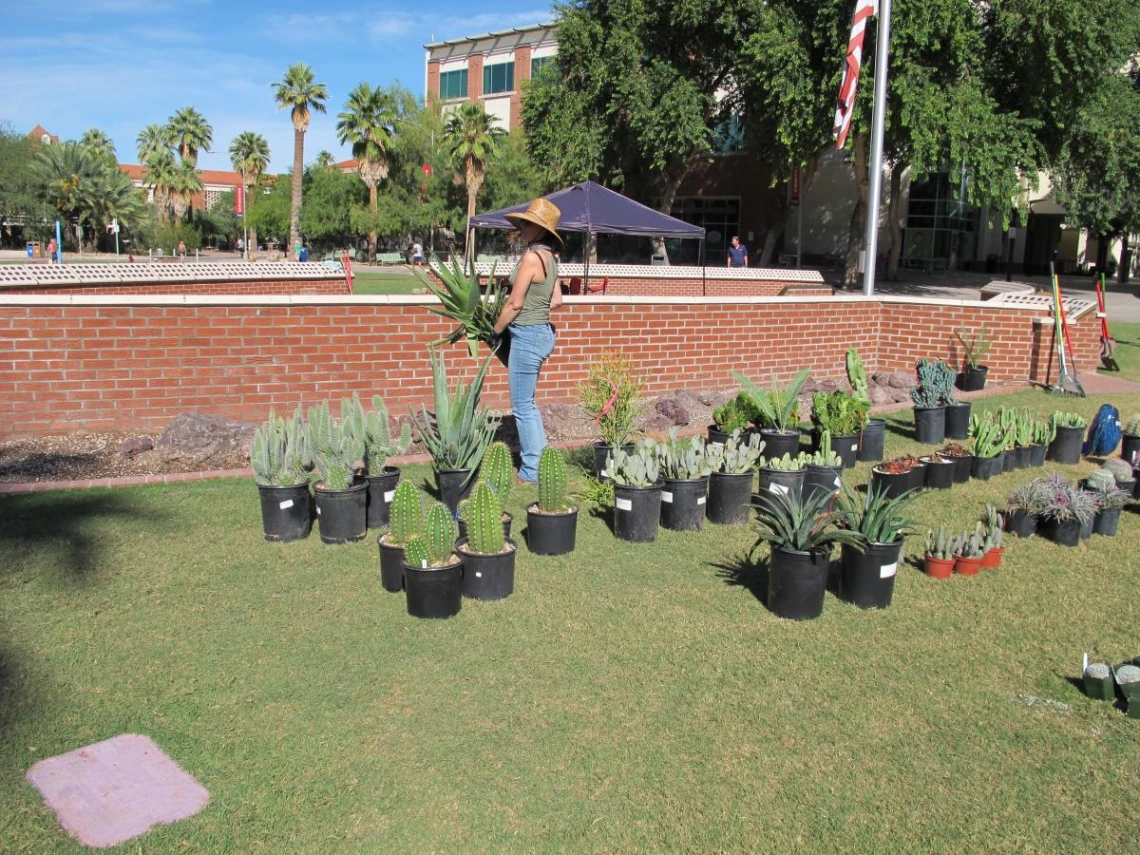
Hundreds of plants were obtained from many nurseries!
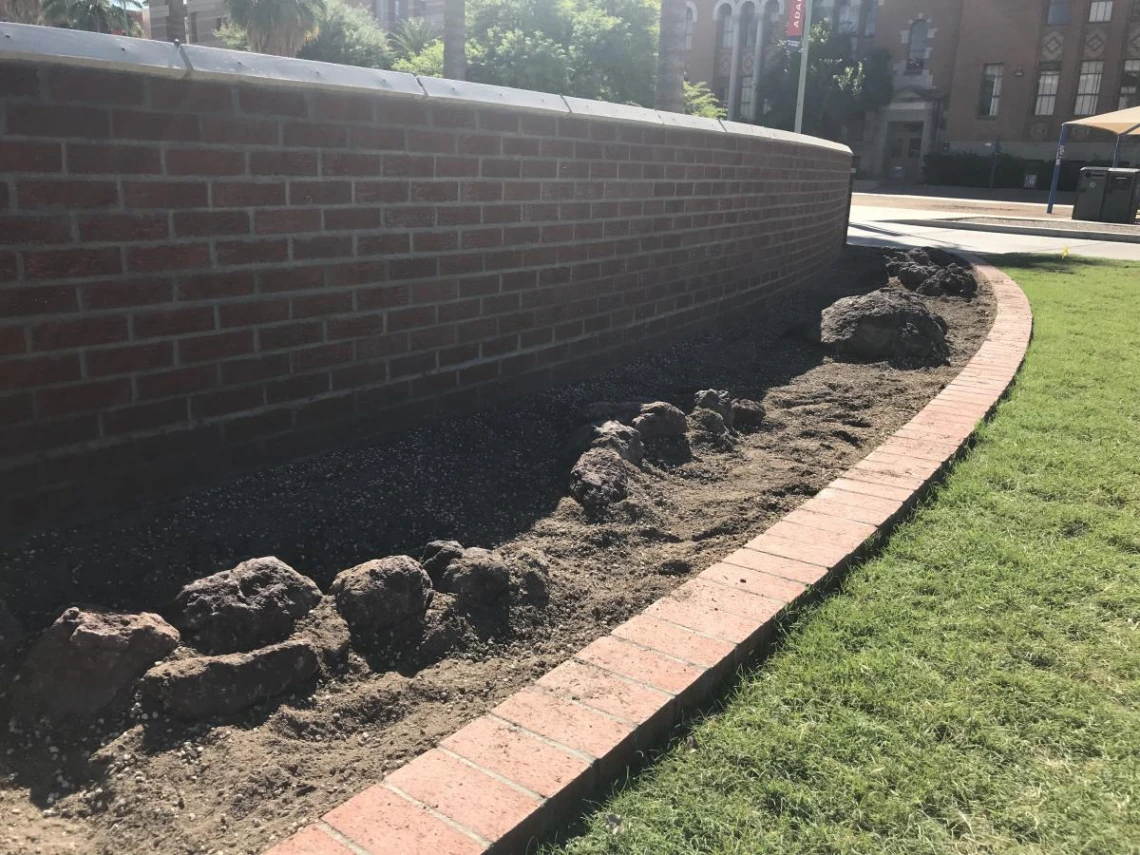
Lava rock boulders were chosen to enhance the illusion of a coral reef and to reflect the historic lava rock wall enclosing the UA historic district.


